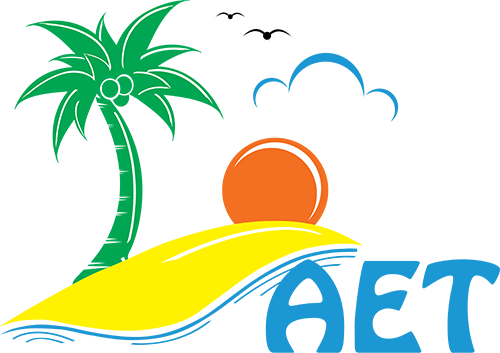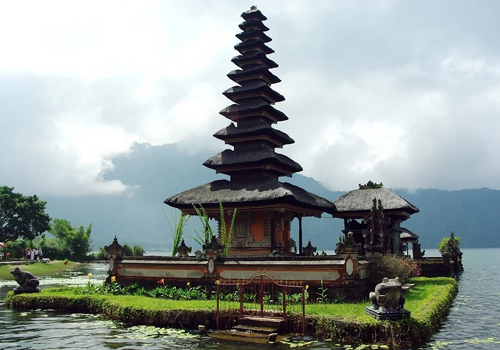Phnom Penh battombong Siem Reap
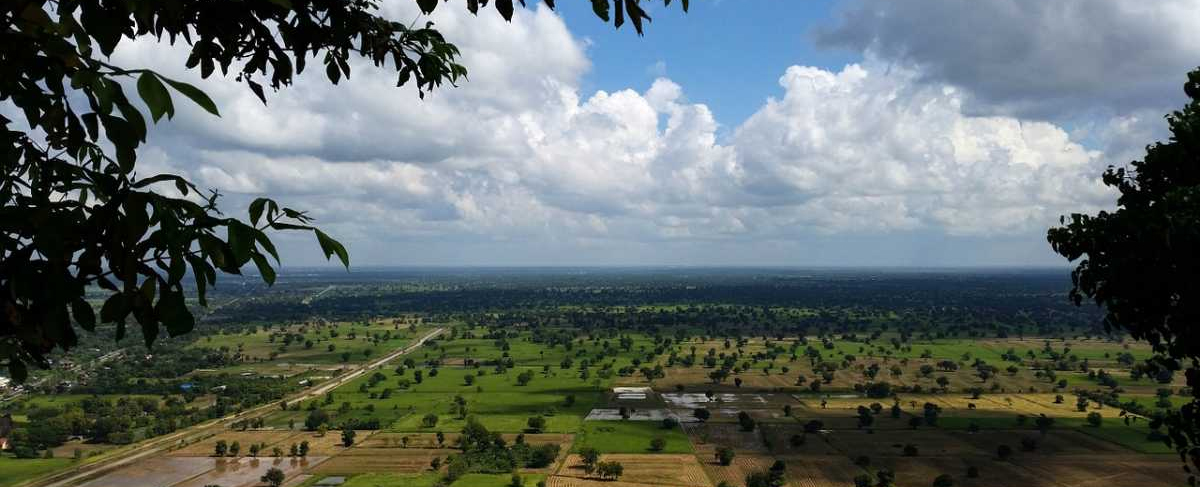
| Tour Code | |
| Tours Destination | Phnom Penh-Battombong-Siem Reap |
| Duration | 7Days 6Night |
| Nature of Tours | Flavours of Cambodia |
Over Views
Related Tours
Price of Tours
Upon Request
Inclusions
- All land sightseeing and transportation
- Accommodation in sharing room
- English speaking local guide
- All entrance fees
- Boat trip in Tonle Sap Lake
- Pure drinking water during sightseeing
Exclusions
- Service not mentioned in program
- All Meals / Compulsory meals
- International flight ticket to Cambodia
- Visa for Cambodia currently USD30 per person
- Single room (quote separated)
- Expenditure of a personal nature
- Travel insurance (cover against all cancellation costs, medical expenses, including repatriation, in the event of accident of illness)
Photo of Tours
Itineraries
Itinerary Day by Day
Notice: Trying to access array offset on value of type null in /home1/asiaexn/public_html/wp-content/plugins/bdthemes-element-pack-lite/modules/accordion/widgets/accordion.php on line 840
Notice: Trying to access array offset on value of type null in /home1/asiaexn/public_html/wp-content/plugins/bdthemes-element-pack-lite/modules/accordion/widgets/accordion.php on line 841
Upon arrival at Phnom Penh International airport; you will welcome by our driver and tour guide then transfer you to hotel for check in. Accommodation at hotel
Breakfast at hotel
Pick up at hotel at 08:30 am. We explore the stunning Royal Palace complex, home to the Cambodian royal family and a symbol of the nation. We begin amid the beautiful royal gardens, landscaped with tropical plants and studded with gleaming spires. We enter the Throne Hall where the royal receptions are held and the Cambodian king’s coronation took place. We then pass the Napoleon III Pavilion made from iron, a gift from the French emperor in the 19th century.
We continue to the Silver Pagoda, named after the 5000 silver tiles covering the floor, each weighing 1kg. Inside are some of the country’s most cherished treasures, including a life-size gold Buddha studded with 9584 diamonds, the largest weighing 25 carats. There is also a delicate emerald Buddha made of baccarat crystal, which gives the temple its Khmer name of Wat Preah Keo (Temple of the Emerald Buddha).
We leave the Royal Palace and continue to the nearby National Museum, home to the world’s finest collection of sculpture from the Angkor period. The exquisite building was completed between 1917 and 1920 and features a lush courtyard garden surrounded by collections from the pre-Angkor, Angkor and post-Angkor periods. We concentrate on the incredible sandstone sculpture from Angkor, as well as the intricate bronzes.
This afternoon, we come face to face with the horrific crimes of the Khmer Rouge. Tuol Sleng was a former high school that the Khmer Rouge turned into a centre for interrogation, torture and death. Today it is a museum of torture and serves to remind visitors of the terrible atrocities that came to pass in Cambodia. 17,000 people passed through the gates of this prison and only seven lived to tell the tale.
The Khmer Rouge were meticulous in their record keeping, photographing all the prisoners and many of these haunting black and white images are on display in the cells. Enemies of the revolution were killed here, as well as many Khmer Rouge loyalists, denounced by an ever more paranoid political party. It became a production line for killing, as those that worked within its walls were unwaveringly loyal to Pol Pot. The party did not make mistakes, so those sent here had to be guilty. The role of the prison was not to prove innocence but to confirm guilt. Tuol Sleng is a profoundly moving experience and not everyone will want to visit. However, it is key to understanding the hell into which Cambodia descended and how far it has come in the years since. We then travel out of town to the Killing Fields of Choeng Ek. Prisoners from Tuol Sleng followed this same route to their fate. An old Chinese cemetery, Choeng Ek was turned into an extermination camp for political prisoners. The remains of 8985 people were exhumed from mass graves and are kept in a memorial stupa here. Despite the horrors of the past, it is a peaceful place to go and a tranquil spot to reflect on the tragic events that engulfed Cambodia and its people.
We then make for Wat Phnom, a symbol of the city. Located on one of the few hills in this pancake-flat capital, the first pagoda was originally built in 1373 to house Buddha statues discovered in the Mekong by a woman named Penh. This gives us the modern name of the city, Phnom Penh or Hill of Penh. Cambodians come to the shrine to pray for luck in love and life, employment and exams, so there it is always a bustling place.
Accommodation at hotel in Phnom Penh
Breakfast at hotel
We leave Phnom Penh and travel west towards Battambang province directly. Upon arrival check in at hotel
We continue to Phnom Sampeau, a sacred mountain dotted with interesting pagodas and stupas. There is also a moving memorial to Khmer Rouge victims who were thrown into one of the many caves that pepper this holy mountain. We then return to Battambang town for the night.
Breakfast at hotel
We travel to Wat Koh district to visit a local village and learn about rural life in Cambodia. We learn about the rice harvest, fruit farming and how the sugar palm is used. After our village visit, we board the bamboo train to travel back towards Battambang. These ‘local trains’ are bamboo platforms with wheels.
Then we leave Battambang after breakfast and travel north towards the trading town of Svay Sisophon. We then head deeper into Banteay Meanchey province and then continuous to Siem Reap.
We travel out to the mighty Tonle Sap Lake to visit the floating village of Chong Kneas. There are floating schools, floating shops, floating petrol stations, even floating karaoke bars. Many of the houses are floating fish farms with large pens of fish underneath. On the way back to Siem Reap, we call in at Les Artisans d’Angkor, a workshop to redevelop traditional Cambodian artisan skills. Then, check-in at hotel.
Overnight at hotel
Breakfast at hotel
We journey out to the Mother of all temples, Angkor Wat. Believed to be the world’s largest religious building, this temple is the perfect fusion of symbolism and symmetry and a source of pride and strength to all Khmers. Built in the 12th century by King Suryavarman II, this is most famous temple at Angkor. We stay at Angkor Wat to enjoy a picnic breakfast. As the crowds return to their hotels, we venture into Angkor Wat to enjoy its magnificence in peace and quiet. We begin by unraveling the mysteries of the bas-reliefs that tell of tales from Hindu mythology and of the glories of the Khmer empire. Stretching for almost one kilometre, these intricate carvings are a candidate for the world’s longest unbroken piece of art.
Following in the footsteps of the devout and the destructive before us, we then continue to the upper levels of the inner sanctuary. The final steps to the upper terrace of Angkor are the steepest of all, as pilgrims of old were to stoop on their pilgrimage to encounter the Gods. Finally the pinnacle, the sacred heart of Angkor Wat, a blend of spirituality and symmetry so perfect that few moments will measure up.
In the afternoon, we visit the immense walled city Angkor Thom that was the masterpiece of King Jayavarman VII. Following the occupation of Angkor by the Chams from 1177 to 1181, the new king decided to build an impregnable fortress at the heart of his empire. The scale is simply staggering and we are immediately overwhelmed by the audacity of Jayavarman on arrival at the city’s gates. The causeway is lined by an intricate bridge depicting the Churning of the Ocean of Milk from Hindu mythology in which the devas (gods) and asuras (devils) play tug of war with a naga (seven-headed serpent) to obtain the elixir of immortality.
We begin our visit at the Terrace of the Leper King. This intricately carved platform was the royal crematorium and the statue that was originally thought to be the leper king is now believed to be Yama, the god of death. We continue along the Terrace of Elephants, originally used as a viewing gallery for the king to preside over parades, performances and traditional sports. At the southern end lies the Baphuon, once of the most beautiful temples at Angkor, dating from the reign of Uditayavarman 1 in the 11th century. It has undergone a massive renovation by the French and is now once again open for viewing.
Our climax is the enigmatic and enchanting temple of the Bayon. At the exact centre of Angkor Thom, this is an eccentric expression of the creative genius and inflated ego of Cambodia’s most celebrated king. Its 54 towers are each topped off with the four faces of Avalokiteshvara (Buddha of Compassion), which bear more than a passing resemblance to the king himself. These colossal heads stare down from every side, exuding power and control with a hint of compassion, just the mix required to keep a hold on such a vast empire. Before clambering upwards, we unravel the mysteries of the bas-reliefs, with their intricate scenes of ancient battles against the Chams and their snapshot of daily life during the Angkor period.
Breakfast at hotel
We travel to Ta Prohm which has been abandoned to the elements, a reminder that while empires rise and fall, the riotous power of nature marches on, oblivious to the dramas of human history. Left as it was ‘discovered’ by French explorer Henri Mouhout in 1860, the tentacle-like tree roots here are slowly strangling the surviving stones, man first conquering nature to create, nature later conquering man to destroy.
After soaking up the unique atmosphere of Ta Prohm, we continue to the giant pyramid of Takeo, one of the highest temples in the Angkor area. Built at the end of the 10th century, it was never completed. Some scholars contend this was due to an inauspicious lightning strike during construction. Others have suggested the high quality sandstone was simply too hard to carve in detail.
This morning we also visit the remains of an old Angkorian bridge which once spanned the Siem Reap river. Like the Romans before them, the Khmer kings built long, straight roads connecting the outposts of their empire and these included many magnificent bridges. There is also the option to visit the smaller temples of Chau Sey Devada and Thommanon for avid temple enthusiasts.
In the afternoon, we travel through the traditional village of Preah Dak to the 12th century temple of Banteay Samre. Built by King Suryavarman II, the genius behind Angkor Wat, this temple has been extensively restored. The temple is unique in that over-quarrying of sandstone led to the use of laterite for the roofed corridors. The pediments above the inner doors here include some of the most accomplished carving from the Angkor period.
We continue further north to Banteay Srei, Angkor’s ultimate art gallery. This petite pink temple is the jewel in the crown of Angkor-era sculpture. The elaborate carvings here are the finest found in Cambodia and the name translates as ‘Fortress of the Women’, thanks to the intricate detail here, considered too fine for the hands of a man.
Originally believed to date from the latter part of the Angkor period, inscriptions at the site suggest it was built by a Brahman in 967. However, some architectural historians have suggested that the inscriptions may date from an earlier structure on this site and the temple is in fact later, marking a high-water mark in Khmer sculpture.
We finish by experiencing sunset over the rice fields from the royal crematorium of Pre Rup, a classic view of the Cambodian countryside.
Accommodation at hotel in Siem Reap
Breakfast at hotel
Free leisure until driver pick up and then you will transfer to airport for your next destination flight.
END OF SERVICES END OF SERVICES!!!
Classical Tours
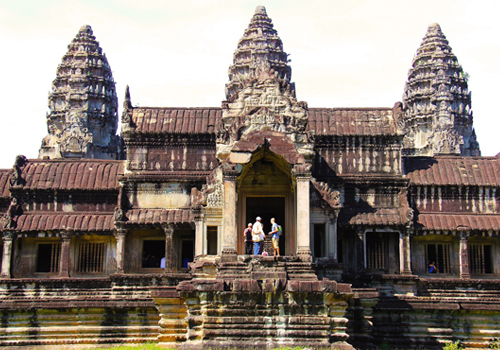

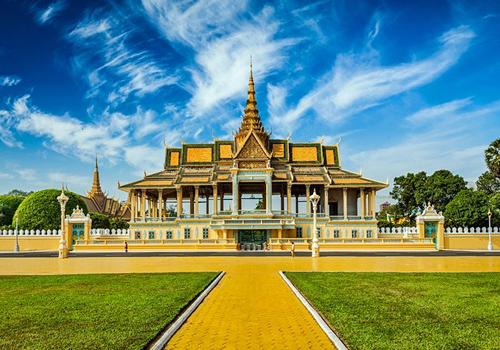
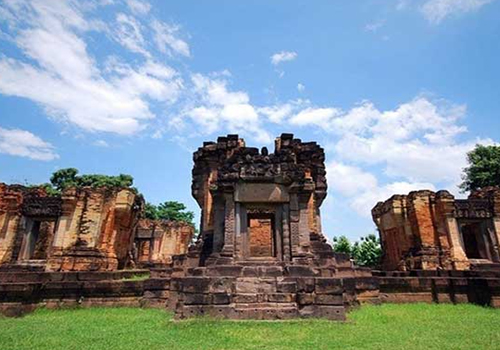
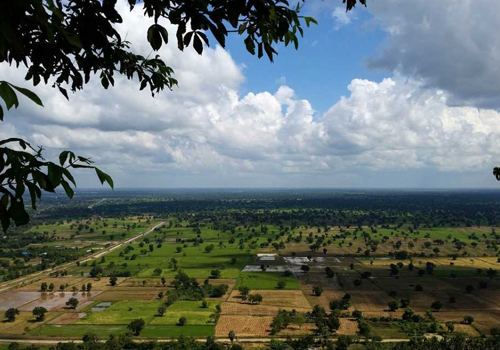
What Client Say




